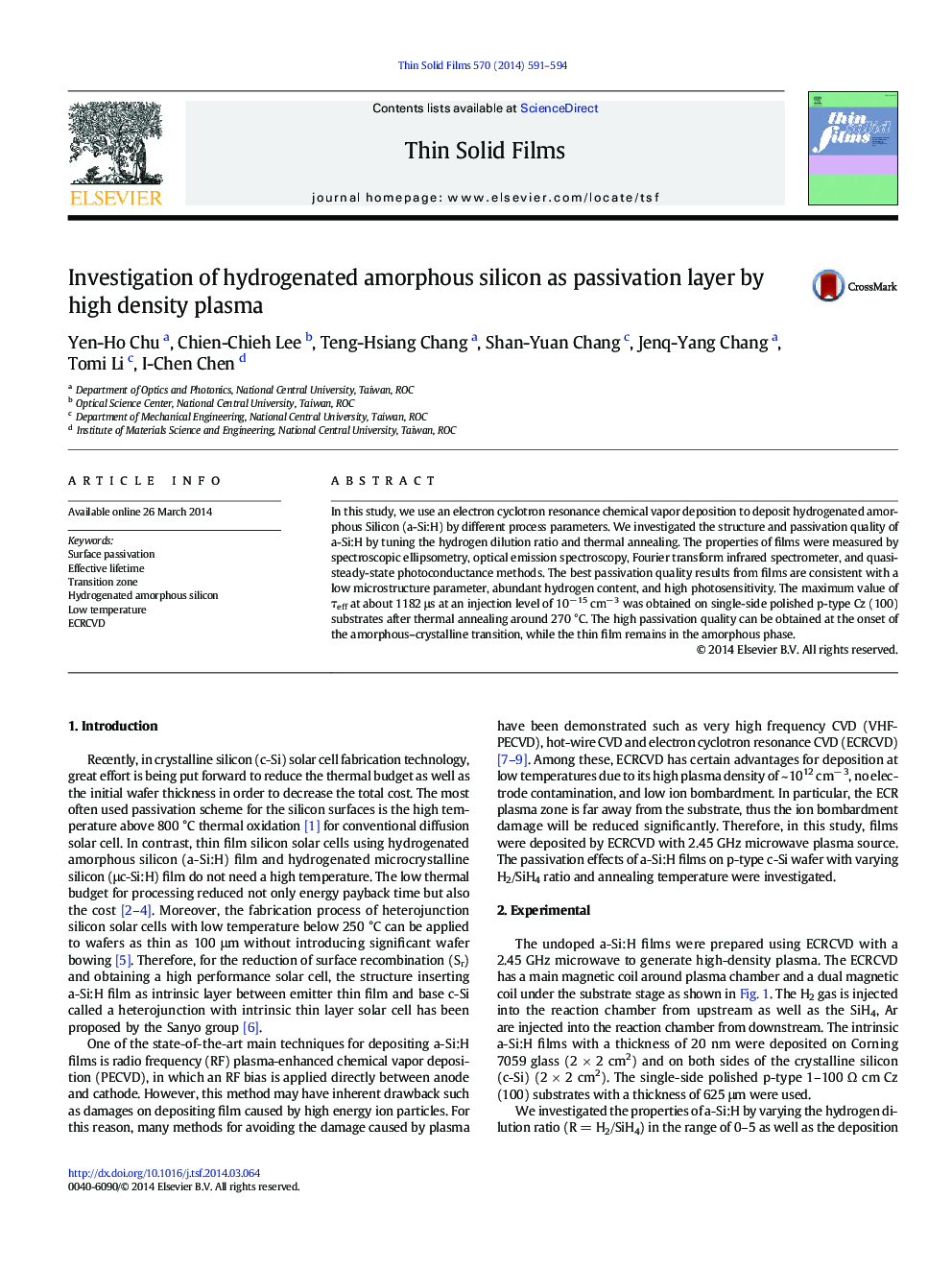| Article ID | Journal | Published Year | Pages | File Type |
|---|---|---|---|---|
| 1664990 | Thin Solid Films | 2014 | 4 Pages |
•Amorphous silicon film grown by hydrogen dilution is investigated for passivation.•Lower microstructure factor demonstrates better passivation performance.•Post thermal annealing is an effective method to improve the effective lifetime.•Carrier lifetime is larger than 1 ms at onset of amorphous–crystalline transition.
In this study, we use an electron cyclotron resonance chemical vapor deposition to deposit hydrogenated amorphous Silicon (a-Si:H) by different process parameters. We investigated the structure and passivation quality of a-Si:H by tuning the hydrogen dilution ratio and thermal annealing. The properties of films were measured by spectroscopic ellipsometry, optical emission spectroscopy, Fourier transform infrared spectrometer, and quasi-steady-state photoconductance methods. The best passivation quality results from films are consistent with a low microstructure parameter, abundant hydrogen content, and high photosensitivity. The maximum value of τeff at about 1182 μs at an injection level of 10− 15 cm− 3 was obtained on single-side polished p-type Cz (100) substrates after thermal annealing around 270 °C. The high passivation quality can be obtained at the onset of the amorphous–crystalline transition, while the thin film remains in the amorphous phase.
